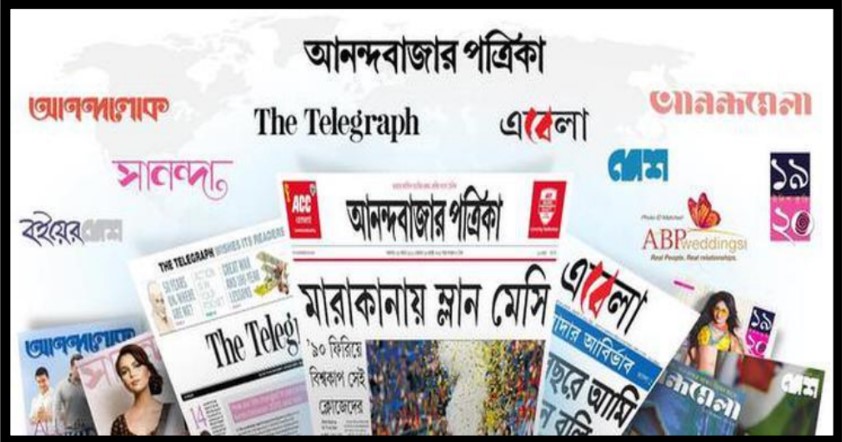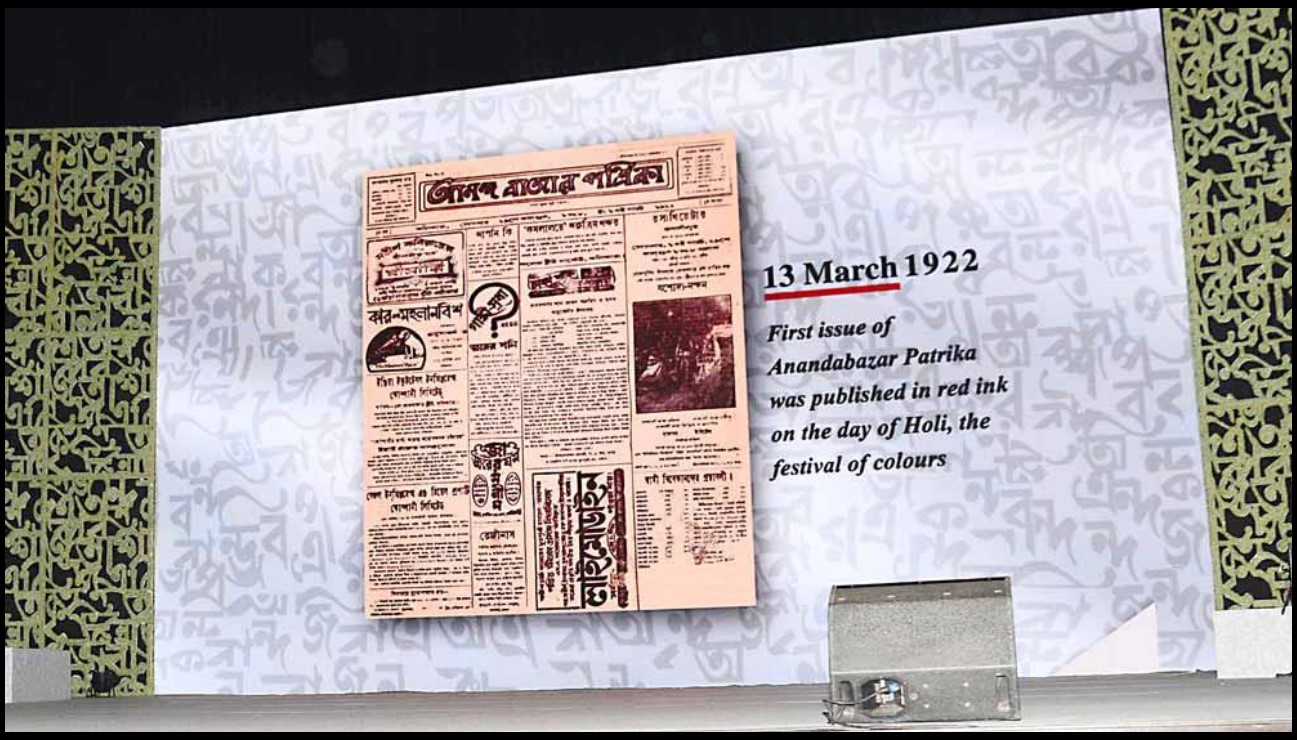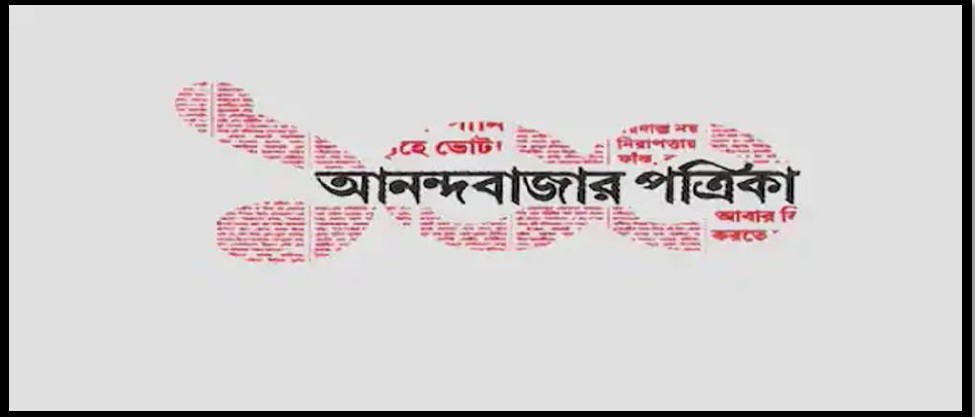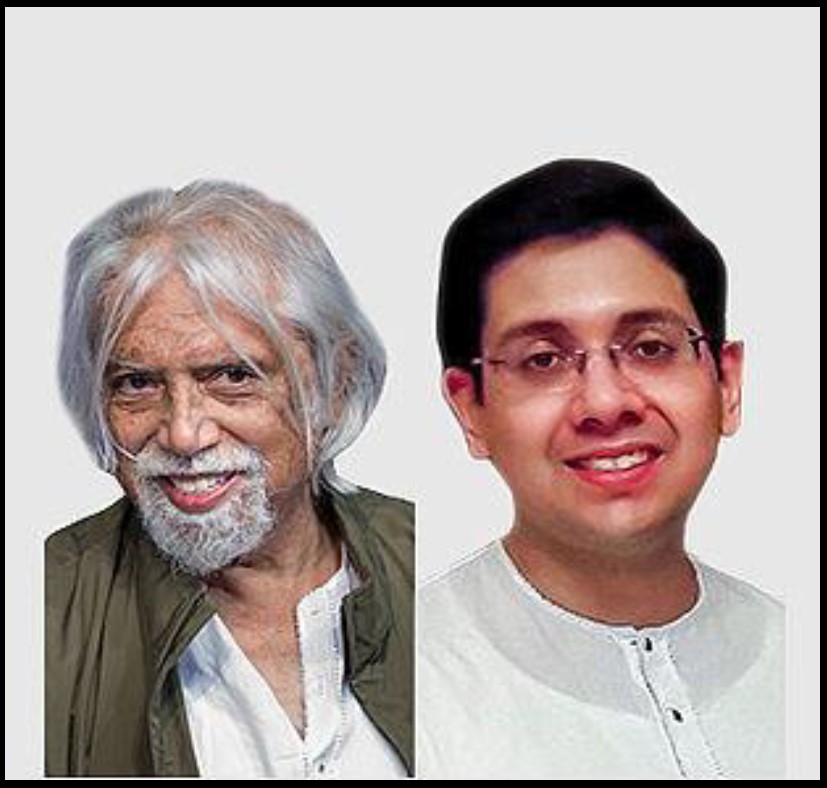A Brief History on India’s Oldest Regional Newspaper: The Legendary Anandabazar Patrika
Introduction:
Newspaper is an integral part of Indian life. Various newspapers starting from English-written to the vernacular, dominated the market in India from 1779 onwards. Each newspaper has its own distinctive quality regarding the quality and type of news it publishes.
Anandabazar Patrika is one such newspaper that dominates the market of West Bengal. One of the oldest published in India, the Anandabazar Patrika (now a part of the ABP Group), has shown its influence in shaping the mainline Bengali thought and opinion for more than nine decades, with its successful campaign Anandabazar ki bollo? (What does Anandabazar say?) [1]
Figure 1: Anandabazar Patrika: Informing the masses since 1876 and a perfect blend for tradition and modernity. [1]
Patriotic Beginning:
The newspaper has a colourful beginning. It was first started by Sisir Kumar Ghosh and Tusharkanti Ghosh (father-son duo) in 1876 in a small village, Magura, in Jessore district, now in Bangladesh. The newspaper was named after Tusharkanti’s grandmother’s sister
Anandamoyee. Initially, the paper did not do well and stopped publishing after a few publications. [2]
Figure 2: Pioneer of Anandabazar Patrika: Sisir Kumar Ghosh (left) and Tusharkanti Ghosh (right). [2]
It was around 1922 when the newspaper came back again with the help of Prafulla Sarkar and Suresh Majumder, both of them were the journalists as well as the editors of newspaper. It first appeared publicly on the evening of 13th March 1922 under their ownership on a festive day of Holi intentionally. The paper had four pages having a cost of 2 paise with a remarkable selling of 1000 copies. [3]
Some lines in the paper were printed in red colour. The red colour always being a symbol of ‘danger signal’, was the main thought to use it as a medium of fear. The paper was marked with a strong sense of love for the country. The dual purpose of using the words ‘Bande
Mataram’ on the paper were, working in favour of Indian Independence from the hands of British domination and working for the development of the nation after being self-dependent. The paper had to face the aggressive red eye of the British Government. They tried to ban the newspaper by putting the editors, journalists and other associated persons into jail for long duration from 1922 to 1947 for taking sides of Indian citizens. [4]
The formidable paper increased its number of pages from four to six including several cartoons and characters. From 1923 onwards the paper turned into a daily morning newspaper and also launched new editions twice a week for the appreciators. [4]
Figure 3: First publication of Anandabazar Patrika (13 March 1922). [5]
The newspaper started gaining immense popularity among Bengali people more than any other newspaper in terms of circulation. [5]
Some years later, in 1931, the newspaper was forced to stop its publications for several months by a press authority under British using a Draconian Law called Vernacular Press Act to curtail criticism of government in local language press. But the paper always showed their never-give up attitude and came back with more powerful zeal than before. Anandabazar Patrika covered the devastating earthquake of Bihar with authentic pictures which occurred in 1934. Anandabazar Patrika was the first ever and only Indian regional newspaper to take the
coverage of Berlin Olympics of 1936 with its own journalists and reporters live from the place it took place. After 1996, this Indian newspaper again proved itself to be the only one to send their reporters and journalists to Stockholm to make a coverage and report on Amartya Sen’s
Nobel Prize ceremony. Apart from these events, the newspaper was also said to be the first to help the Indians to know about the fearless escape of Netaji Subhash Chandra Bose in 1941. Lord Mountbatten expressed his gratitude towards this newspaper for reporting Gandhiji’s
assassination as “greatest homage to the Mahatma” in 1948. [5]
According to the report of the Commission of Press, Anandabazar Patrika had become a giant in terms of the circulation of newspapers from a single venue throughout the country. Anandabazar Patrika occupied a significant amount of space within the heart of the majority of Bengalis and become an undivided soul of Bengali cultures and traditions. It was around 1992 that the newspaper gained more popularity as it introduced the district pages that cover the particular news related to that district. The newspaper also brought several magazines into the limelight. Some of them are, Businessworld (sold out in 2013), Sunday (not functioning at present), Sportsworld (handed over to Sportstar later on) and Anandalok (a magazine for celebrities, their lifestyle and others). In the same year, two more newspapers were brought by the Patrika, namely, The Telegraph and The Business Standard. The newspaper also started an online version from 2001 onwards, which is still adored by Bengalis throughout the world. [5]
Several Facts:
The newspaper was technologically advanced in terms of printing even then. It is one of the first newspapers in the country that introduced full offset printing and a modular layout for its content. It also pioneered the blueprint of the Bengali linotype, which gave rise to the first
‘Bengali and Hindi typewriter. Later, the Patrika played an important role in introducing Bengali characters in word processing without manipulating the language to fit the software. This preceded Microsoft’s Unicode by almost a decade. [5]
Dominating The Market:
Since its initiation, the newspaper has dominated the market of Bengali newspapers. Even though the newspaper is considered expensive in comparison to other newspaper like Bartaman or Sambad, in terms of circulation and advertising and popularity, no other newspaper has reached its level. According to some reports, the newspaper market is estimated to be more than ₹900 crores. [5]
Figure 4: Anandabazar Patrika completed its 100th anniversary on 13 March 2022. [5]
Ownership Structure:
The ownership of paper is controlled by ABP Private Limited which in turn is controlled by the Sarkar family. Aveek Kumar Sarkar, the Editor Emeritus and the vice chairman of the ABP Group of Publications, who is also the grandson of Prafulla Kumar Sarkar is the current
owner of the newspaper. He was described as “India’s most sophisticated newspaper proprietor” by Nicholas Coleridge, the author of Paper Tigers. He further describes him as “a man of impeccable tastes and choices from the food he has to his wardrobe”. [5]
According to Media Ownership Monitor, Aveek Kumar Sarkar holds 19.5% of the share while Arup Sarkar, Atideb Sarkar and Shithi Sarkar each also holds 19.5 of the total share. The remaining 21.9% share is held by ABP Holding Private Limited. The share is divided equally at a rate 25% among Aveek Kumar Sarkar, Atideb Sarkar, Shithi Sarkar and Arup Sarkar. Therefore, the Sarkar family holds total of 99.99% share of ABP Private Limited. [5]
Figure 5: Aveek Kumar Sarkar, the Vice-chairman of ABP Group of publications as well as the director of ABP News Network Private Limited (left) and his nephew Atideb Sarkar, the Executive Director of ANN Pvt. Ltd. (right). [5]
List of Editors:
Below is the list containing all the name of those persons who took the responsibility of editorship of this 100 years old newspaper. [5]
Prafulla Kumar Sarkar (1 June 1922 – 6 October 1923)
Satyendranath Majumder (7 October 1923 – 31 October 1930)
Makhanlal Sen (1 November 1930 – 26 November 1930)
Bankim Chandra Sen (27 November 1930 – 10 June 1931)
Satyendranath Majumder (11 Jun 1931 – 6 January 1941)
Prafulla Kumar Sarkar (7 January 1941 – 14 April 1944)
Chapalakanto Bhattacharya (16 April 1944 – 24 June 1954)
Nalini Kishor Guha (25 June 1954 – 3 October 1954)
Chapalakanto Bhattacharya (4 October 1954 – 31 January 1959)
Ashok Kumar Sarkar (1 February 1959 – 17 February 1983)
Aveek Kumar Sarkar (18 February 1983 – 22 June 2016)
Anirban Chattopadhyay (23 June 2016 – 31 May 2020)
Ishani Dutta Ray (1 June 2020 – Present)
The Bengali community contributed much to the long running of Anandabazar Patrika. Later on, the love and affection for this newspaper crossed the boundary of Bengal culture and is now accepted and admired nationally as well as internationally. [5]
References:
1. History of Anandabazar Patrika Newspaper | Newspaper Advertising Encyclopedia. 31 May 2020.
2. Anandabazar Patrika . http://india.mom-gmr.org/en/media/detail/outlet/anandabazar-patrika/.
3. “Anandabazar Patrika : Informing the Masses since 1876.” BLoC, 29 June 2018.
4. “Anandabazar Patrika : A Perfect Blend of Tradition and Modernity.” Communication Today, 20 Sept. 2014.
5. “A Hundred Years of Anandabazar Patrika : In Black and White and Red.” Business Standard, 22 Mar. 2022.







